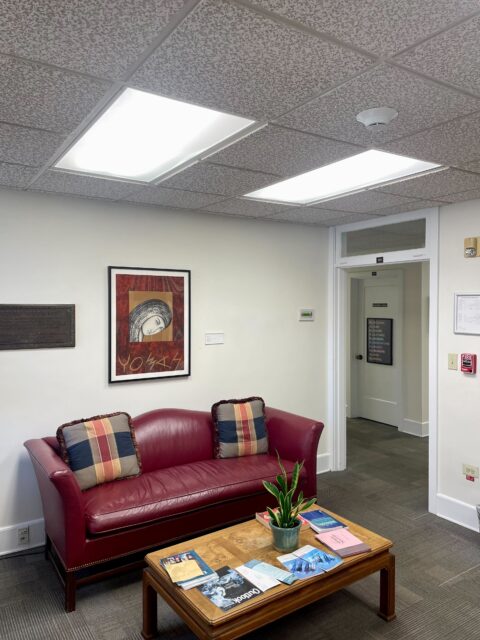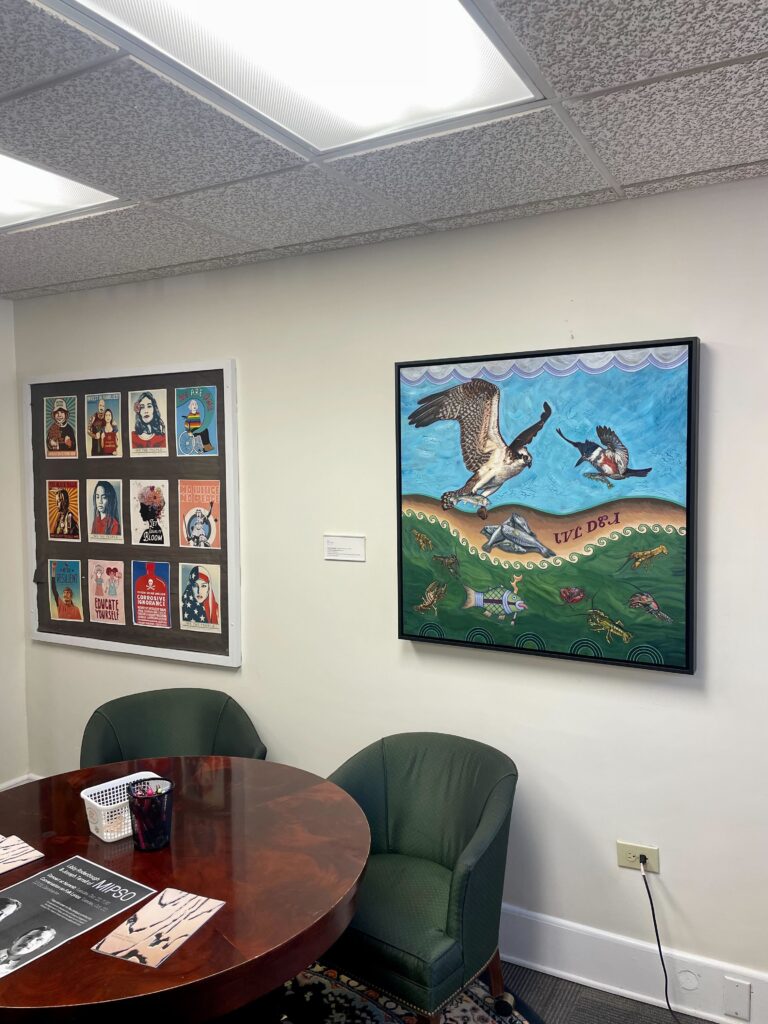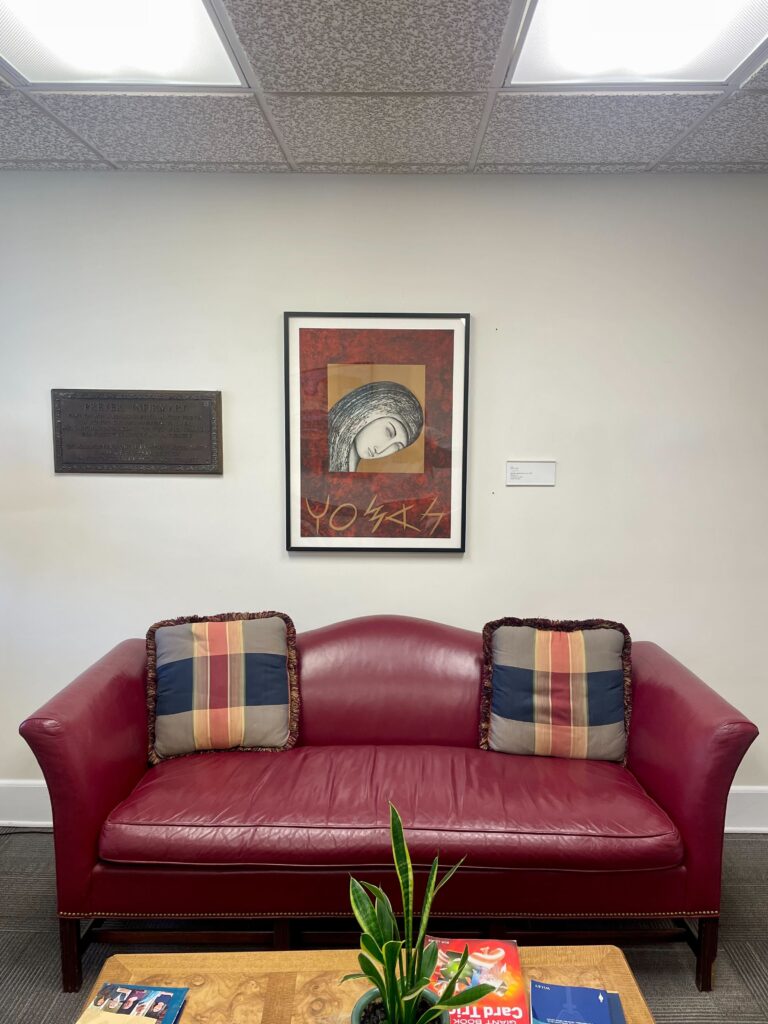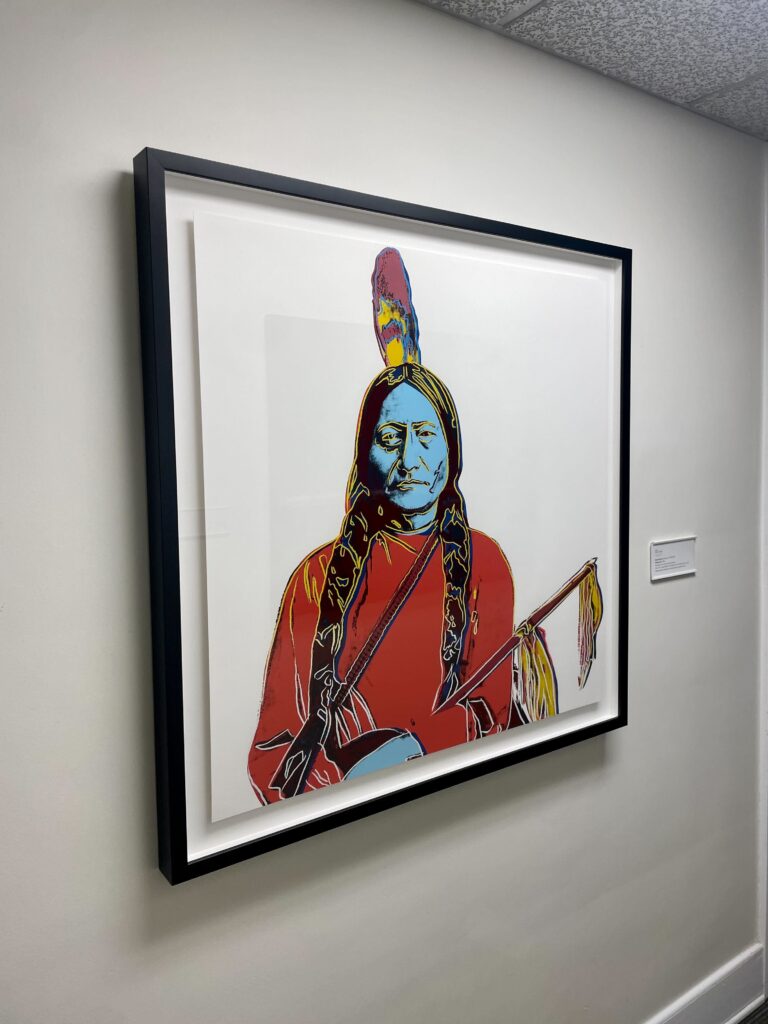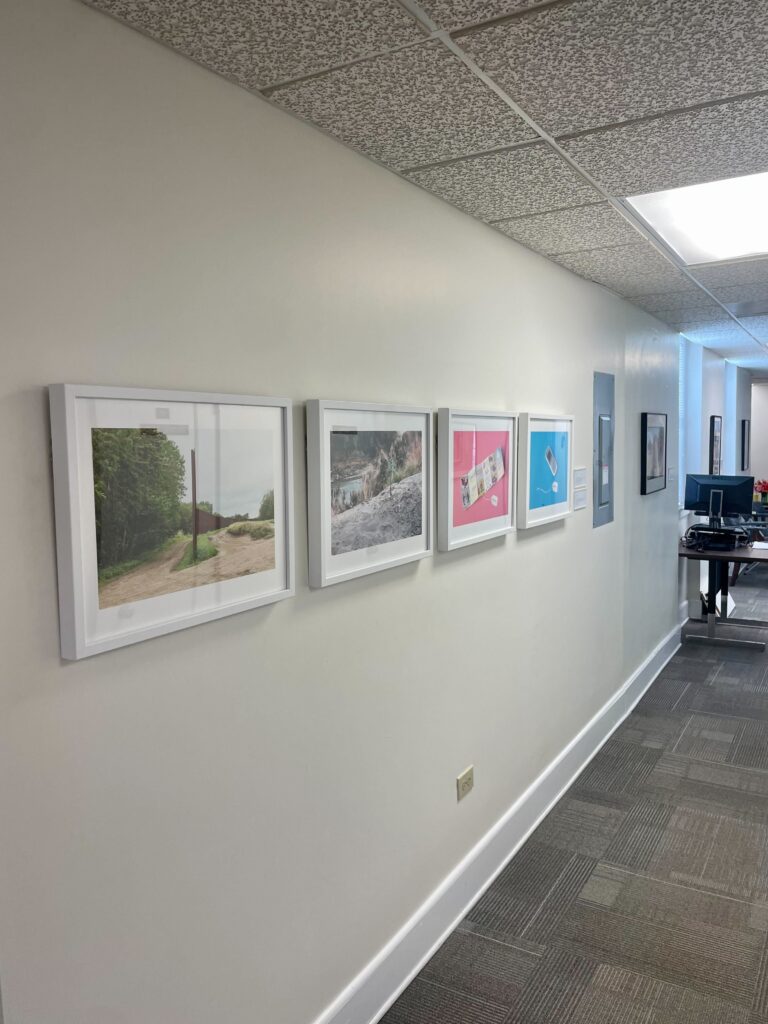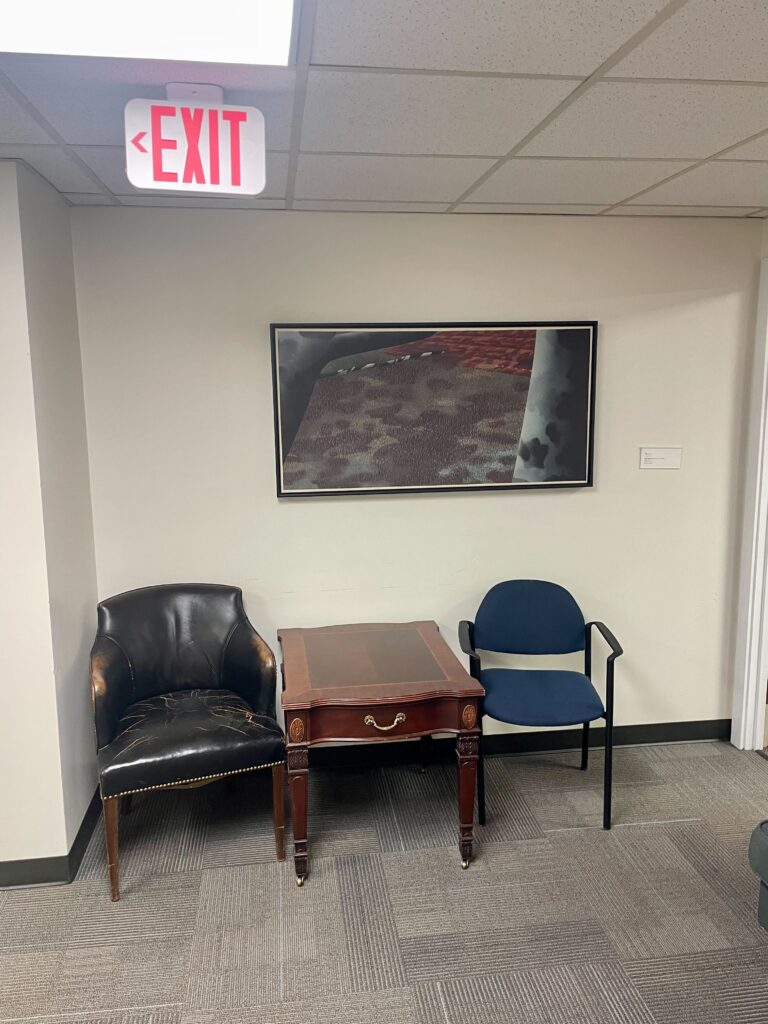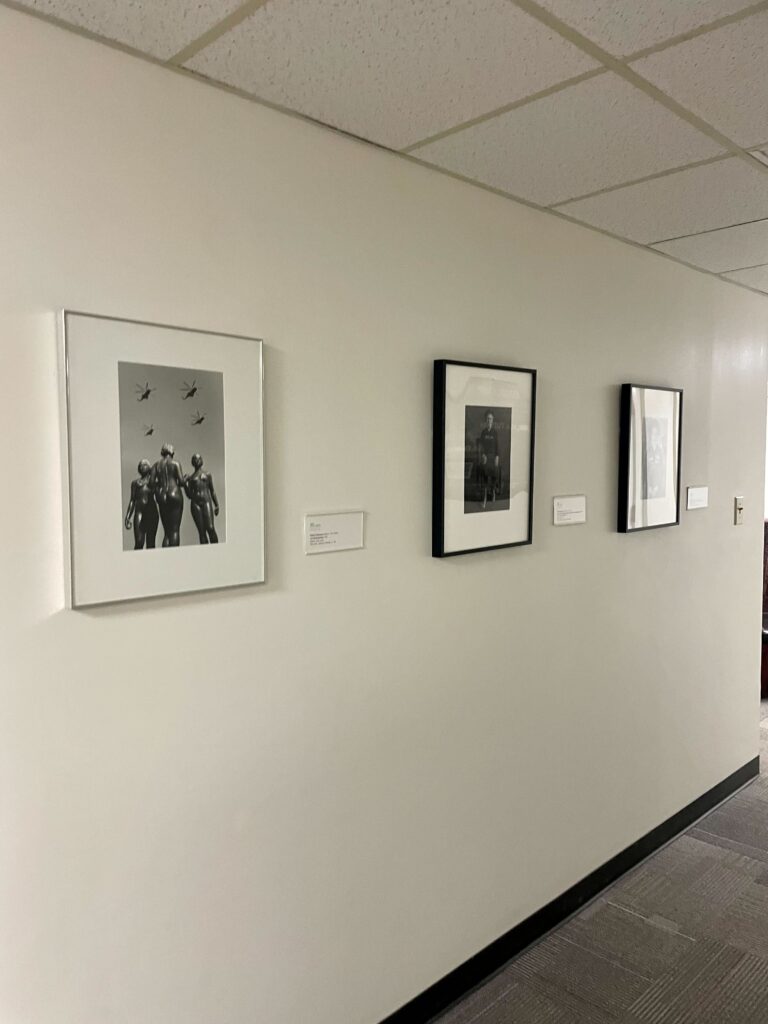This summer, the Preyer Academic Building got a refresh of works. For years, a handful of dark, black-and-white photographs had hung on the walls, and thus it was time for a refresh to match the vibrancy of the different professors, students, and staff that utilize the building.
Preyer was initially built in 1938 as Davidson College’s infirmary. It has lived many lives since, and today is home to faculty offices in the departments of Sociology, Gender and Sexuality Studies, Anthropology, Classics, and more. The basement is also home to Davidson’s ROTC program.
The interdisciplinary nature of the building proved difficult in creating a cohesive reinstallation. Abby Brissett ’26 and I looked through the gallery’s extensive collection with two goals: to find works that tell diverse stories and display a vibrant use of color. This led us to the many photographs of William R. Ferris, a Davidson alum, who traveled throughout the American South taking a wide range of photographs of individuals, families, and buildings. Within each work color is almost a character in of itself, with vibrant yellows, blues, and reds.
We tied together Ferris’ work with Susan Harbage Page’s Border series, depicting the material left behind by refugees and immigrants at the USA’s southern border against bright, almost neon colors.
We also included two works to be shown in dialogue: America Meredith’s ᏓᏤᏝ ᎠᏑᏗ (Datsetla Asudi) and Andy Warhol’s Sitting Bull. Meredith is a Sweedish and Cherokee contemporary artist who works from her lived experience, whilst Warhol, a white male modern artist, appropriates the commercialized image of the Sioux Nation Chief, Sitting Bull. By including both of these works we are able to initiate a conversation about appropriation and highlight dialogue that can come from the difference of the two works, both compositionally and metaphorically.
Finally, we also included several works by contemporary photographer Anne Noggle in the basement of the building, all depicting women from WWII in their military uniforms. This appeals to the ROTC offices but also keeps with the visual language and storytelling of the rest of the building.
We hope that Preyer’s new works will both lighten up the repurposed building but also create important conversations between students, faculty, and staff on every floor.
– Sarah Willoughby ’25

